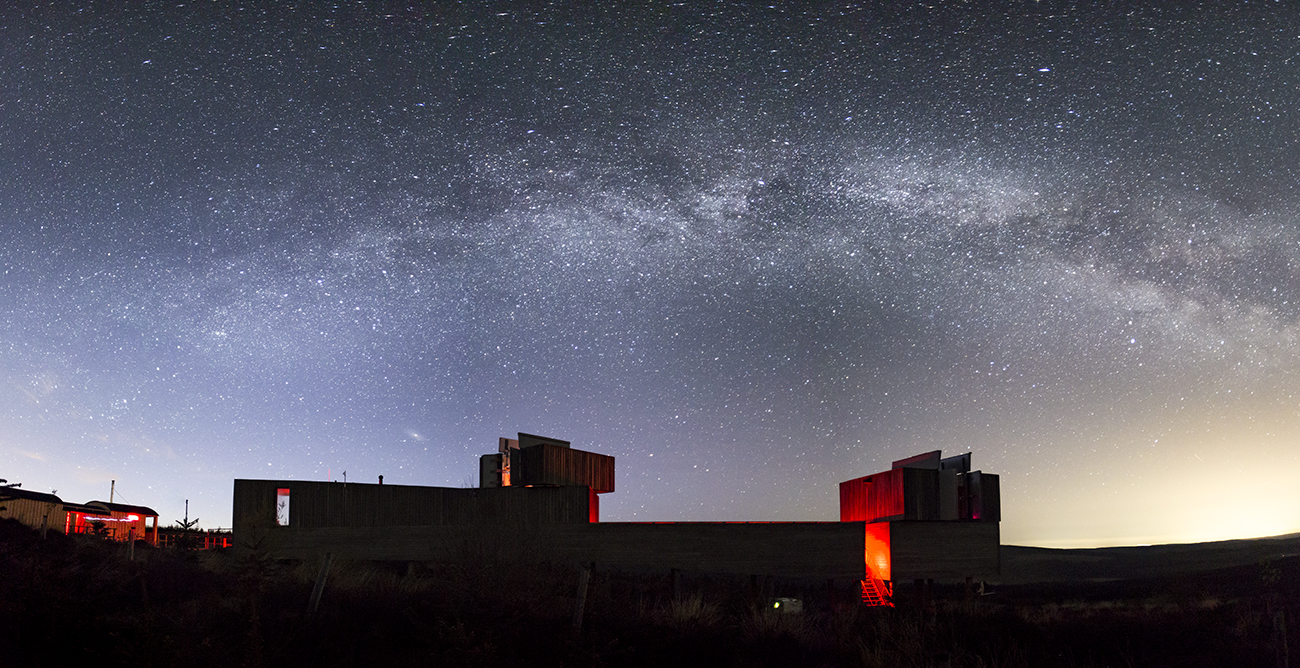Gaze up at the stars on a clear moonless night in the autumn and you’ll notice a strange glowing cloud stretching from horizon to horizon, with dark spreading webs and milky clouds. This is our home; the Milky Way. It’s a barred spiral galaxy, one of many kinds of galaxy, and it’s a sight that few people in the modern world get to see.
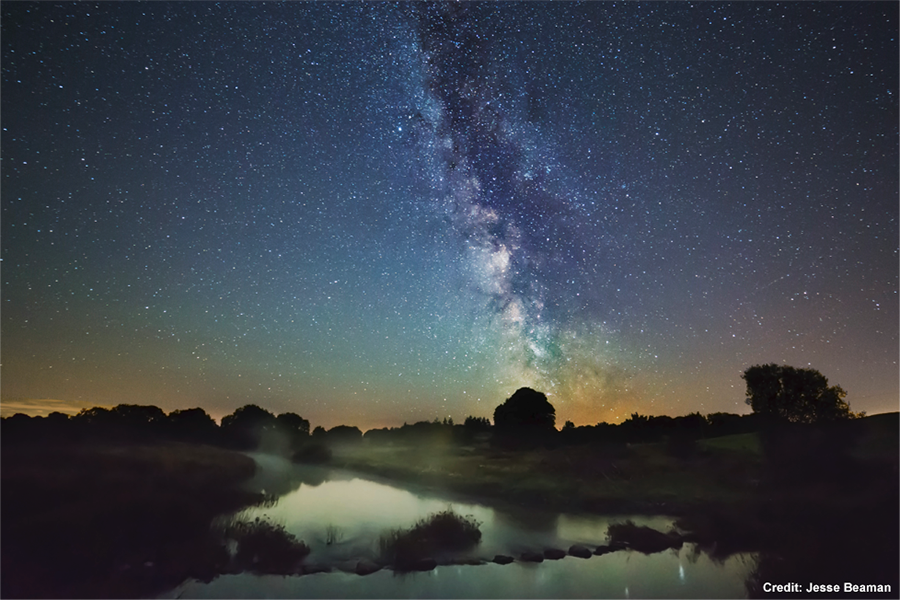
Imagine frying two eggs and putting them back to back. The Milky Way is a similar shape; it’s a very flat disc containing up to 400 billion stars, along with lots of gas and dust. Look at a spiral galaxy face on and you’ll see a glowing circle with spiral arms. Look at it edge on and you’ll see a glowing disc. Every star in the galaxy orbits the middle where there is the most mass and strongest gravity. Our sun takes 240 million years to orbit the galaxy.
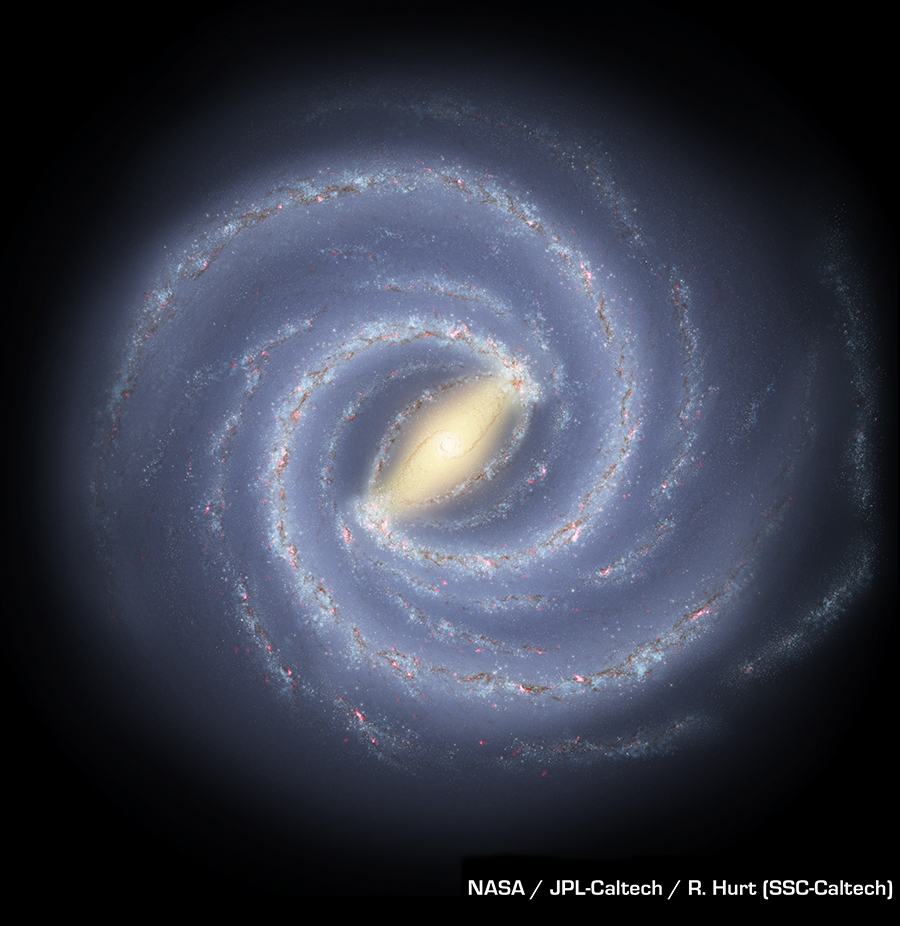


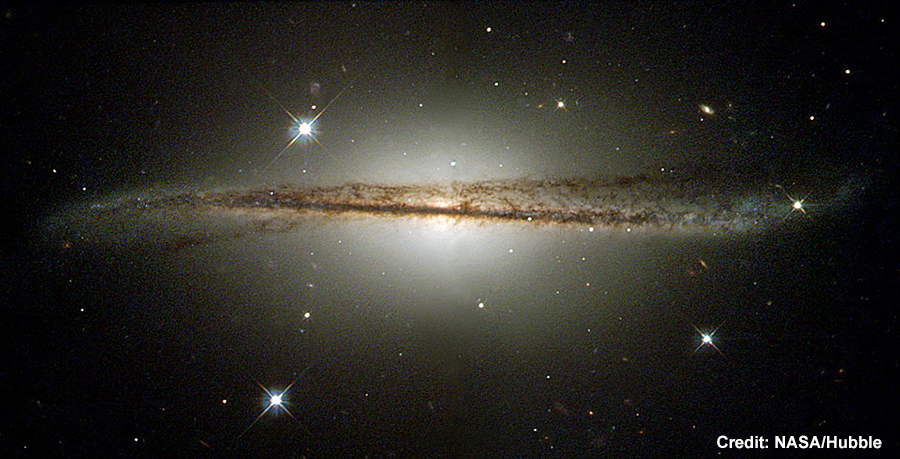
Now imagine the view from inside this giant double fried egg. The closer stars in the disc appear further apart, and the distant stars appear closer and closer together down a vanishing point – just as train tracks appear to get closer together in the distance. Eventually the stars are so distant that they appear to blend together into a milky white glow, so our view of the Milky Way is the combined light of billions of distant stars in our galaxy. The Milky Way can be seen all year, but the bright core is best viewed after dark in late summer.
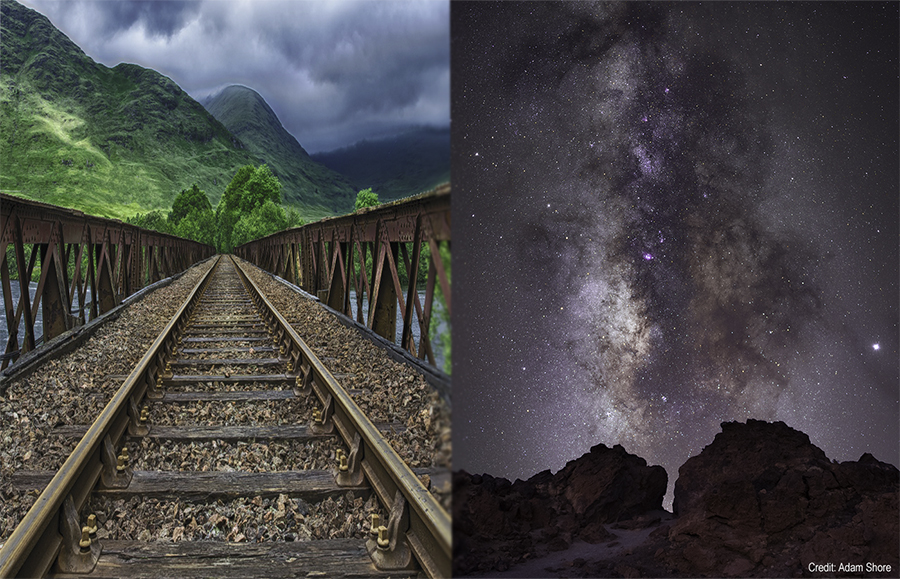
Gas and dust absorbs and scatters the light from these stars, so these are the dark regions you can see. Some of this gas emits or reflects light, these are nebulae; some of the most beautiful telescope targets. When clouds of gas collapse under gravity they can become so hot and dense that nuclear fusion kicks in – at this point a star is born. Stars don’t live forever; when they die they shed the gas in their bodies into the galaxy and the cycle begins again with another generation of stars. The spiral arms in our galaxy are full of gas and dust, so lots of new-born stars live in this region and form beautiful open clusters like the Seven Sisters.
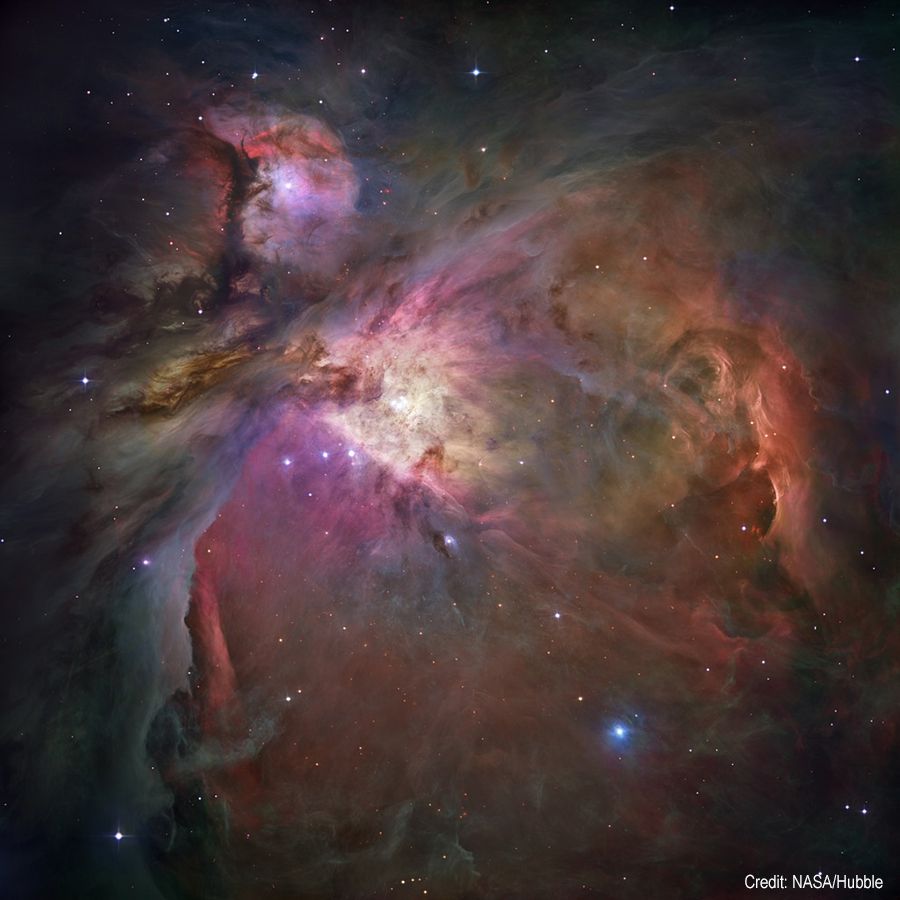

Throughout our galaxy, we can see all sorts of different objects. This includes a birthplace of stars such as the Orion Nebula (above) or a group of young stars that have already been formed (see the Seven Sisters below).
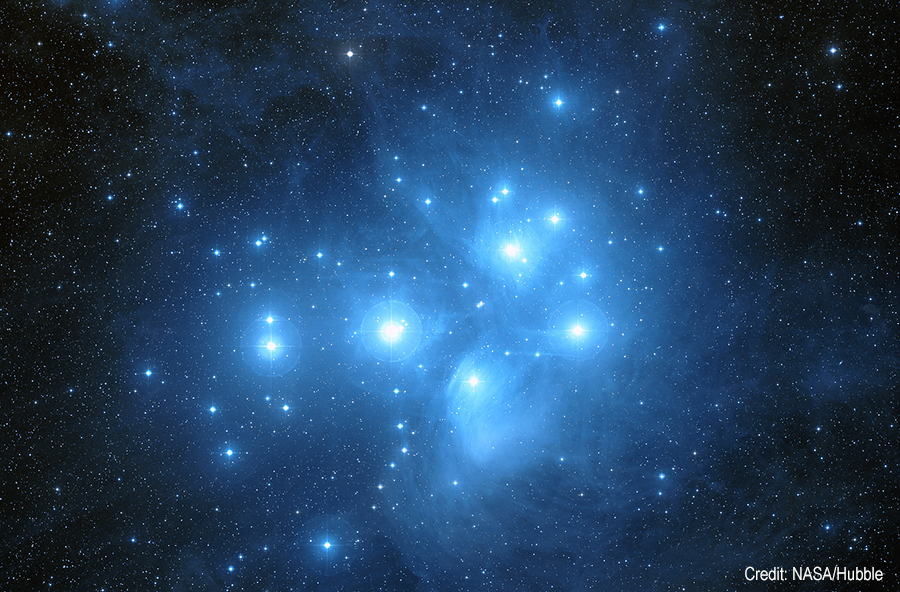

Just like our solar system, the Milky Way also has habitable zones - areas that are more likely to have suitable conditions to support life. It’s a good thing our solar system isn’t inside a spiral arm! The intense radiation from all those new, hot stars would make it very difficult for life on Earth. Our solar system lives in the galactic backwaters, on the edge of the ‘Orion Spur’ which is a minor arm leading off the ‘Perseus Arm,’ one of the main spiral arms in the Milky Way.
Our galaxy also has smaller, companion galaxies that orbit outside of the Milky Way, but you’ll need to go further south to see these in the sky. Other beautiful objects such as Globular Clusters orbit in the Halo, and can been seen up here in the northern hemisphere. A globular cluster is large group of hundreds of thousands of stars - typically in a spherical shape. These types of star clusters live outside of the disc of the Milky Way galaxy, in a region known as the 'galactic halo'.


Next time you have clear skies with no moon and can get far away from light pollution, see if you can find the Milky Way - the huge collection of gas, dust and stars. Just one galaxy of hundreds of billions of other galaxies in our universe.

